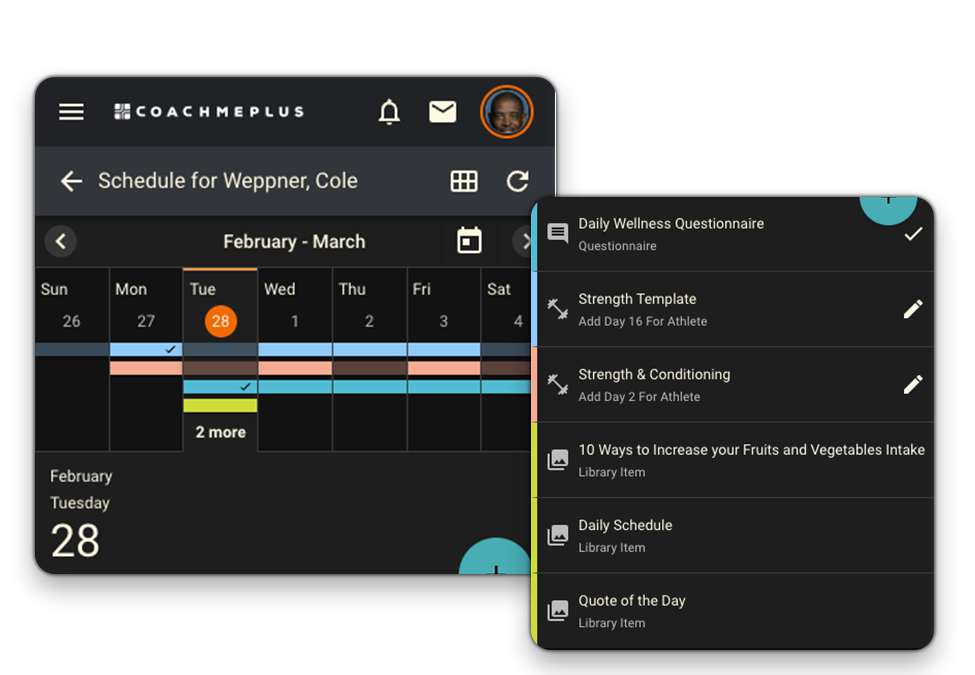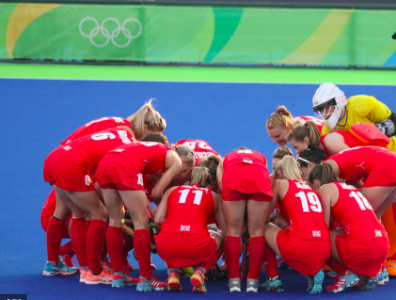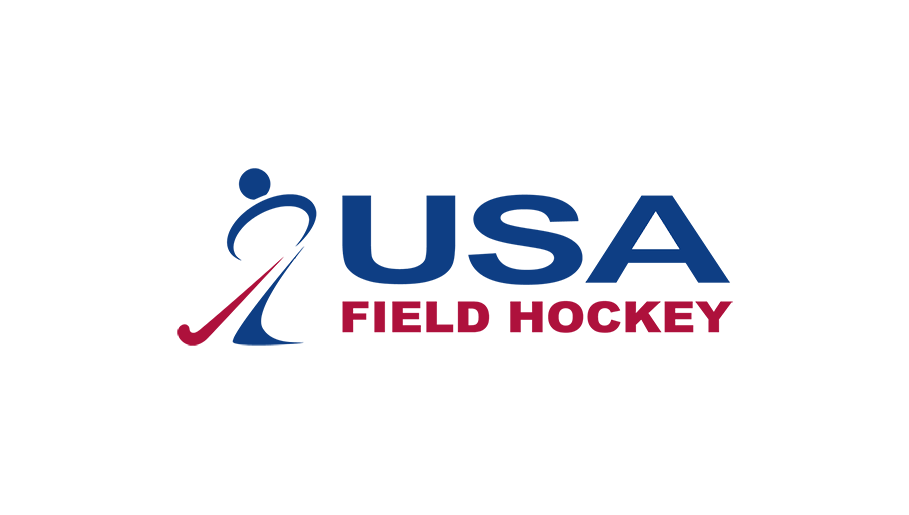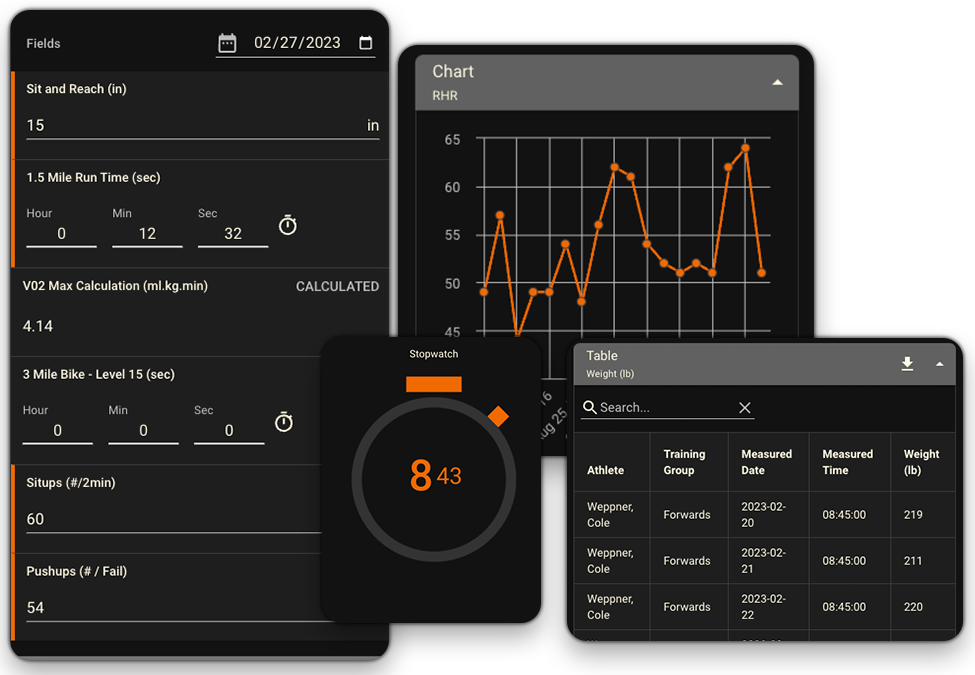
NICK SHEDD,
STRENGTH AND CONDITIONING COACH
The U.S. Women’s National Field Hockey team brought in Nick Shedd as their strength and conditioning coach in December of 2016 after his work at both Bon Secours Sports Performance and EXOS in sports performance training. After earning a Bachelor of Science in Sports Medicine/Wellness from Averett University, Shedd earned his Master of Science Degree with a specialty in strength and conditioning from Appalachian State University.
Shedd is the team’s performance scientist, collecting data from his athletes and analyzing their key performance indicators.
CoachMePlus’s Brayton Wilson caught up with Shedd to discuss how he utilizes the data collected using CoachMePlus, and how it keeps his team in peak condition throughout the season.
Interview with Nick Shedd
WHAT TYPE OF SPORTS PERFORMANCE DATA DO YOU COLLECT?

If I had to globalize it, I would say movement literacy would be number one. Can they move? Can they get into the right positions that we need them to in order for them to play their sport? Number two would be output – looking at their lower-body power and force capabilities, their sprint speed, their aerobic and anaerobic conditioning. And then there’s readiness as well. So we’re monitoring load on the athletes in several different ways and use all of those different things to paint the picture of each athlete, each day and establish where they are at recovery wise. Are they being pushed hard enough? Do we need to pull things back? Just making sure we’re managing them effectively throughout the week.
CoachMePlus lets you easily track all of your athletes data on one platform.
HOW LONG DOES IT TAKE FOR YOU TO BE ABLE TO USE THIS DATA?
Just speaking about CoachMePlus specifically, it took probably about three months for us to really start making effective and fast decisions based off of what we were able to input and then extract from the system. There is a data collection period, for example, with the wellness questionnaires, the body soreness and all of the day-to-day reporting that the athletes do. There was a data collection period where we weren’t making any decisions; we were just trying to establish what their baselines, what their norms were. As we got further into it and we were monitoring internal training loads through the system as well, we started to see trends. When our athletes start to get really sore hamstrings or those minor things that come up here and there with their bodies, and we can go back and correlate that to the data we had in the system. So I’d say it was about three to four months, and now we use it every day.
HOW DO YOU KNOW WHEN TO PUSH YOUR ATHLETES AND HOW DO YOU KNOW WHEN TO PULL BACK?
We have other systems in place. We’re monitoring G.P.S. as well, and basically that allows us through R.P.E – we get internal training load through G.P.S., we get external training load – and also the stuff we do in the weight room I can calculate a training load in there as well. Basically we look at their internal training load, what they’re actually reporting to us and we look at their external training load side-by-side inside of the CoachMePlus system. There’s literally two graphs that sit side-by-side. Those two graphs should theoretically look the same. If an athlete’s external training load, meaning the work they do on the pitch, is really high but their internal training load, the self-perceived training load, is really low, then we know we can push them harder. Conversely, if their training load on the pitch is really low and they are reporting that their training load is really high, then we know that we have to pull back a little bit. There’s also research showing that looking at acute to chronic work load ratios, basically what’s your average work load over the last 28 days versus your average work load over the last seven days. We know what ratio we want to be in. If you’re above a certain threshold, you’re at high risk for injury. If you’re below a certain threshold, you’re not gonna adapt to anything. We use that every single day as we go through the week to see where we’re at with the players, and make sure we’re pushing them just hard enough but not too much.
HOW DO YOU MANAGE ALL YOUR ATHLETES’ TRAINING THROUGH THEIR BUSY SCHEDULES?

A lot of it comes down to education, especially with this software. They have certain tasks they have to do on their phones in the mornings. Just telling them to do it without them understanding are we actually looking at the data and what’s being done with it. It can be challenging to get compliance right off the bat, but once you show them we’re actually making decisions based off of this, it’s not just me saying, ‘hey, how are you doing today?’ Once they understand that, then you start to see much better compliance. We’re basically two-a-days five days a week. They are pretty good on their own as far as doing what they need to do outside of here, but with CoachMePlus it allows them to rate their quality of sleep and things of that nature. We get a little bit of a subjective analysis. If an athlete is performing poorly on the field and we can go back and look at their wellness questionnaire over the last week and see that they’ve, for whatever reason, not recovered well for five straight days, then we know that we need to dig a little deeper and find out why. CoachMePlus gives you access to all your athletes anywhere anytime.
HOW DO YOU COMMUNICATE WITH YOUR COACHING STAFF?

Within CoachMePlus, we set up different dashboards for every coach. We have our coaching staff with the actual head coach and assistant coach, there’s a dashboard for the strength and conditioning coach, and then a dashboard for the athletic trainer. I’d say one of the biggest challenges as a coach is to give information to each different staff member in a manner that is digestible and useful to that person in a flash. We sat down as a staff and collaborated on what do the coaches, the athletic trainer want to see every morning. Then we went through and created the dashboards accordingly so all they have to do is log into the system, click on their own dashboard and they can see exactly what they need to see. For the athletes, everything is pretty much managed on my end. They don’t see a whole lot of the data. The reason for that is sometimes if you have one day of data saying that you’re not well recovered, it looks like a ‘bad data point’. We don’t necessarily want the athletes to see that and panic and think, ‘Oh man, I can’t train today,’ because that’s not exactly what it means. We’re more looking at trends over time. The athletes know what it’s for. We’ve explained it to them. They understand training load, they understand the difference between external load and internal load. We’ve had a lot of educational conversations about that.
HAVE YOU USED SPORTS SCIENCE TECHNOLOGY LIKE THIS BEFORE?

It is. I’ve been a [Microsoft] Excel monkey forever. I still use Excel, but it’s one thing to have all of the data and to have it all in nice pretty graphs and everything. Everybody understands graphs, but if it’s not all in the exact same place, then it takes time. The biggest key with technology like CoachMePlus, it allows me to do less work on the back end, give me more time back so that I can actually use the information and use it quickly. One of the strength and conditioning coaches for the Arizona Coyotes told me about your system and that’s where I first dug into it.
CoachMePlus displays all your athlete’s data with ready to analyze data images.
WHAT ADVICE WOULD YOU GIVE TO A YOUNGER COACH STARTING WITH SPORTS PERFORMANCE PROGRAMS?
It’s really easy to get caught down rabbit holes when you’re doing data analysis. The biggest way that you can help yourself, especially if you are a single strength and conditioning staff member like myself or if you’re of a small staff: buy yourself time. The best way to do that is to have one system where every bit of information can go into that system, it’s easy to input the information and it’s easy to extract that information. Also, all of the data collection and analysis we do as strength and conditioning coaches pretty much doesn’t matter unless you can go to your boss or your head coach and say, ‘This is why I’m making the decisions that I’m making and here’s how I think we should manage the athletes,’ and have something digestible for them to look at. You can’t go to every head coach and just start spitting signs at him because you’re going to run into a wall really quickly. By using a system like this one, it has great visuals; it makes things easily accessible. I don’t even have to go down the hall in order for our head coach to receive the information, it eliminates emails in their inbox, all of those things help the head coach. At the end of the day as strength and conditioning professionals, our job is to be part of the support staff for the head coach and the team.


